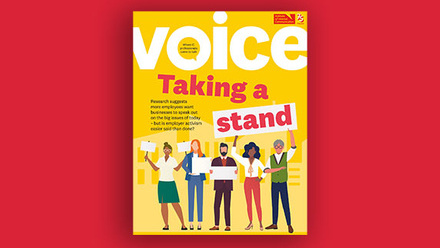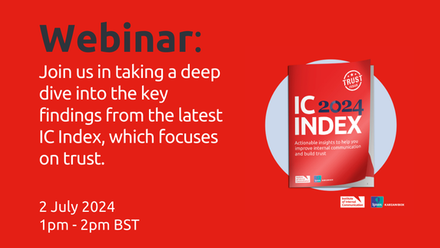5 things you need to know about employee advocacy

1. Authenticity is everything.
When it comes to employee advocacy, it’s important to find the sweet spot where employees are happy and enthusiastic to comment and share without being asked. Try to understand what made them feel like that about the company or product, and then replicate it. Host listening sessions with different pockets of employees from your business, and use any forums or networks that already exist to keep your finger on the pulse. Then keep track of who your advocates and influencers are, and pick their brains about what makes them have that view about your company – but try to keep it authentic and not place words in their mouths.
It’s also worth trying to do the same with those who are a little more cynical to get some balance. It’s not possible to do this every time. It can be a fair bit of work and take a while – authentic employee advocacy takes ages to cultivate, but once you’re there it’s priceless.
Alex Harvey, senior employee communications adviser, QBE Europe

2. It helps to graduate employees through tiers.
Employees are an essential asset in building and promoting your brand. Their active advocacy creates a gateway to trusted advertising, dispelling misconceptions and gaining valuable feedback from their social circles. Internal comms is crucial in cultivating employee brand advocates, and should employ a systematic tiered approach.
First, generate awareness among employees regarding your products, services or employer attributes, with a focus on timely and relevant information. In the next tier, gradually foster understanding by providing context and explanations. Then, employees witness others engaging with the subject matter through demonstrations and workshops.
Next, employees co-create. Encouraging staff involvement in pilot testing and establishing platforms for feedback fosters a collaborative environment. In the next tier, employees are empowered to advocate and share when provided with a secure space, clear policies and readily available information for external dissemination. Lastly, employees embrace a sense of ownership and actively defend the brand, aligning their purpose with its success.
Adesh Chetram, head: group integrated communication, Nedbank

3. You can’t force employees to be advocates.
I’ve worked in and with organisations who repeatedly demand that their employees share their corporate content on their personal channels. This can feel stilted and insincere to readers, as well as making everyone feel uncomfortable. Make the content good and interesting enough that employees feel proud to share it in the first place, give space to allow people to add their own thoughts, and don’t worry if it’s not shared by everybody. It’ll resonate much more with readers if the interactions feel genuine and authentic, and your natural advocates and influencers will emerge.
Whatever your channel, provide clear calls to action for people. I’ve also seen employee advocacy software that can help by providing a list of suggested accompanying text options
Lisa Riemers, content and communications consultant

4. Advocates must find their voice.
As an employee advocacy program matures and ambassadors grow more confident on social media, they naturally begin emulating the brand’s writing style, drawing inspiration from official content. This shift often leads to improved content performance, garnering positive results. However, there may be a drawback – the loss of their unique tone of voice.
It’s essential to manage expectations and gently guide ambassadors back to expressing their original thoughts and writing style. Encouraging personal stories and diverse content and highlighting their personalities can help regain authenticity while still maintaining the brand’s essence. Striking this balance ensures the continued success of the program while preserving the human touch and individuality of each advocate.
Sakshi Sharma, global social media and digital insights manager, AXA

5. You need to think about ‘exit advocacy’.
As an employee advocacy program matures and ambassadors grow more confident on social media, they naturally begin emulating the brand’s writing style, drawing inspiration from official content. This shift often leads to improved content performance, garnering positive results. However, there may be a drawback – the loss of their unique tone of voice.
It’s essential to manage expectations and gently guide ambassadors back to expressing their original thoughts and writing style. Encouraging personal stories and diverse content and highlighting their personalities can help regain authenticity while still maintaining the brand’s essence. Striking this balance ensures the continued success of the program while preserving the human touch and individuality of each advocate.
Sakshi Sharma, global social media and digital insights manager, AXA






